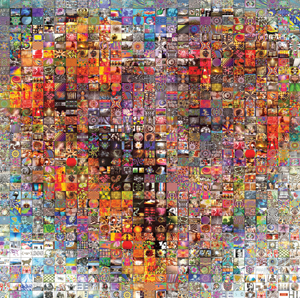Allowing people to use your work under a Creative Commons licence can open up new revenue streams, raise profile and benefit everyone, Joscelyn Upendran believes.

“An artist’s enemy is obscurity, not piracy,” said Tim O’Reilly, founder of O’Reilly Media. It seems apt to recall this adage at a time when copyright infringement and ‘piracy’ are frequently stated to be amongst the most significant threats to the creative industry. In this context, some artists and creators choose to license their work with Creative Commons (CC) licences. In law, copyright owners are automatically granted exclusive rights in the owned work, for a set period of time, whether they wish to have those rights or not. These include the exclusive right to distribute copies to the public. The Internet has made it possible for the public to easily copy and share copyrighted works. The “All rights reserved” position of copyright means that even if the owner wished their work to be shared, it is not always easy to convey those wishes without involving lawyers. All this can act as a barrier to sharing. The aim of CC is to alleviate this barrier. Founded in San Francisco in 2001, CC is a non-profit organisation that provides free and easy-to-use copyright licences. By choosing to use CC licences you are not giving up your copyright, but refining and tailoring it to suit your particular aims. The use of CC licences enables you, as the copyright holder, to choose “some rights reserved” at your discretion.
FREE AND EASY
Although a large proportion of CC licensed works tend to be digital, it is possible to licence any works that have copyright. All six core CC licences requires attribution to be given, so by using CC licences you should always gain credit as the originator of the work. In selecting the licence for your work, you decide whether you wish to allow other people to create derivative works by building on yours; whether you wish to allow others to make money from using your work; and whether you wish to impose an obligation to license works built using yours, with the same terms of licence that you used. Music community sites such as ‘Jamendo’ and ‘theSixtyone’ offer musicians the opportunity to make their music freely available under CC licences. The use of a CC Attribution Non-Commercial licence, for example, would allow the free and legal sharing of your music non-commercially, which may gain a wider fan base who are willing to pay for an album or live performance tickets. The non-commercial provision means that you are able to strike a deal with anyone who may wish to use the music in a commercial context.
This model has been used by well-established bands as well as artists looking for their first break. In 2008, the rock band Nine Inch Nails released its albums ‘Ghosts I-IV’ and ‘The Slip’ under a CC licence. Both albums were legally downloaded free by millions of people. At the same time they gained financially by selling physical editions. They were reported to have made $1.6m on Ghost I-IV in its first week of release. Curt Smith, of the band Tears for Fears, said of CC in his recent interview with Mashable: “It’s simple and easy and protects you in the ways you want to be protected… [it] is saving artists a tonne of legal fees by making it simple.”
WRITE ON THE MONEY
Authors have adopted a similar model. Cory Doctorow, an award-winning science fiction author and blogger, was one of the first to licence a novel (‘Down and Out in the Magic Kingdom’, 2003) with one of the CC licences. Doctorow, who has published several CC licensed works since, says he has benefitted from a higher profile leading to other professional opportunities including an increasing number of speaking invitations. Examples of CC use have to include a reference to photo-sharing website Flickr, which remains the largest single source of CC licensed images, with more than 135 million CC licensed photographs. Wikimedia (the non-profit foundation behind Wikipedia) held its second ‘Britain Loves Wikipedia’ photo competition during February. The premise of the competition was to encourage the public to photograph the artefacts of participating museums and galleries. All the photos are to be made available free under a recommended CC licence on Wikimedia Commons, which can then be used to illustrate Wikipedia articles. Wikipedia articles are all CC licensed.
Examples of artists using CC licences are numerous, and there is an increasing quantity of creative works now available for legal sharing and reuse. That is not to suggest that CC would be suitable for every artist in every context. That is for the artist to decide: if you have the copyright, CC licences allow you to exercise it as you choose.
JOSCELYN UPENDRAN is CEO of lovle, a training software and services company that allows you to find and legally remix learning content. She is also the Public Project Lead for England and Wales for Creative Commons UK.
TW @Joscelyn
w http://www.lovle.com
http://www.creativecommons.org.uk
This article is licensed CC Attribution licence http://creativecommons.org/licenses/by-nc-sa/2.0/uk/ attribution to: Joscelyn Upendran – http://www.twitter.com/Joscelyn. If you wish to use this article, it should carry the following credit: ‘First published by ArtsProfessional, issue 215, 12 April 2010.
http://www.artsprofessional.co.uk’.



